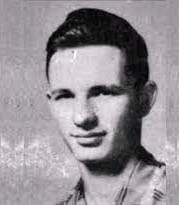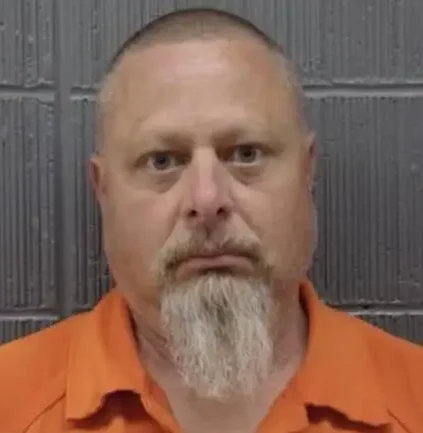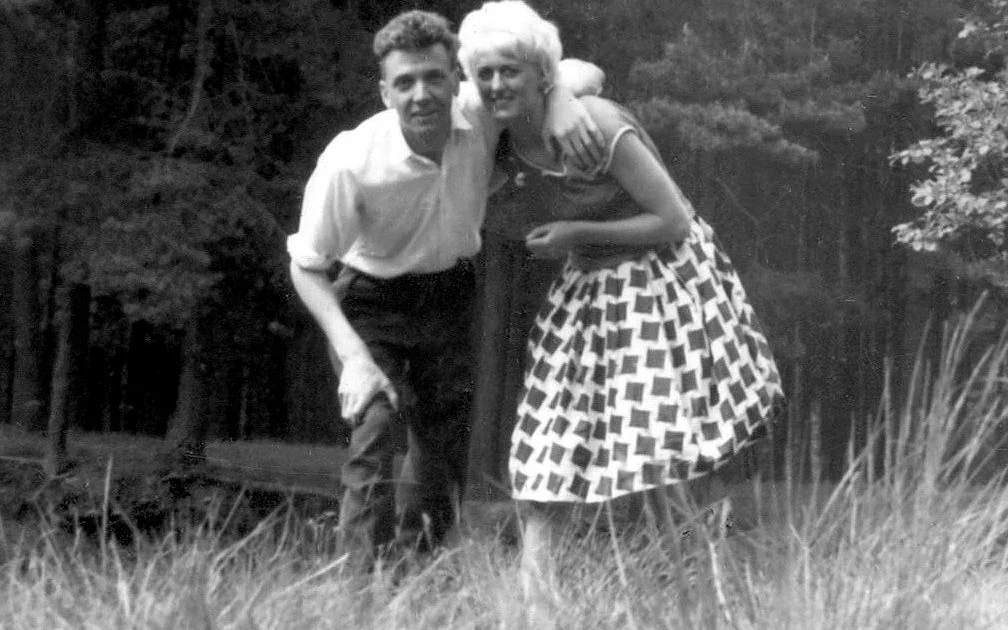

Environmental factors absolutely create criminals. There’s something called the Vulnerable Locations Index where the government have actually looked at areas where there’s high crime rates, high unemployment rates, high mental health rates, high poverty rates and we know by looking at that it’s a hot spot for criminal behavior, a hot spot for mental health and substance abuse. So we know that those factors absolutely correlate to crime. However, they don’t necessarily correlate to producing serial killers, because if they did, we’d have a lot more serial killers.

The crucial things about early childhood development is ensuring that a baby feels safe and secure and nurtured and this includes touch, play, feeling secure and safe. It’s crucial in terms of how our brain develops and it’s crucial in terms of how we have interpersonal relationships with other people. Our early attachments in childhood are critical to the person we become as an adult. The one most fits Ian Brady is the ambivalent attachment. This is when a mother comes in and out of your life. You can’t predict when they’re going to be there. You can’t predict when your needs as a child are going to be met. This can be really unsettling. It can create anger in a child. It can make them ask why am I not wanted. Brady’s mother gave him up when he was four months old. The critical period for forming strong attachments is that first two, two and a half years of life. He was given up at four months when he would have started forming an attachment with his mother, so he’s experienced an abandonment at a critical time.
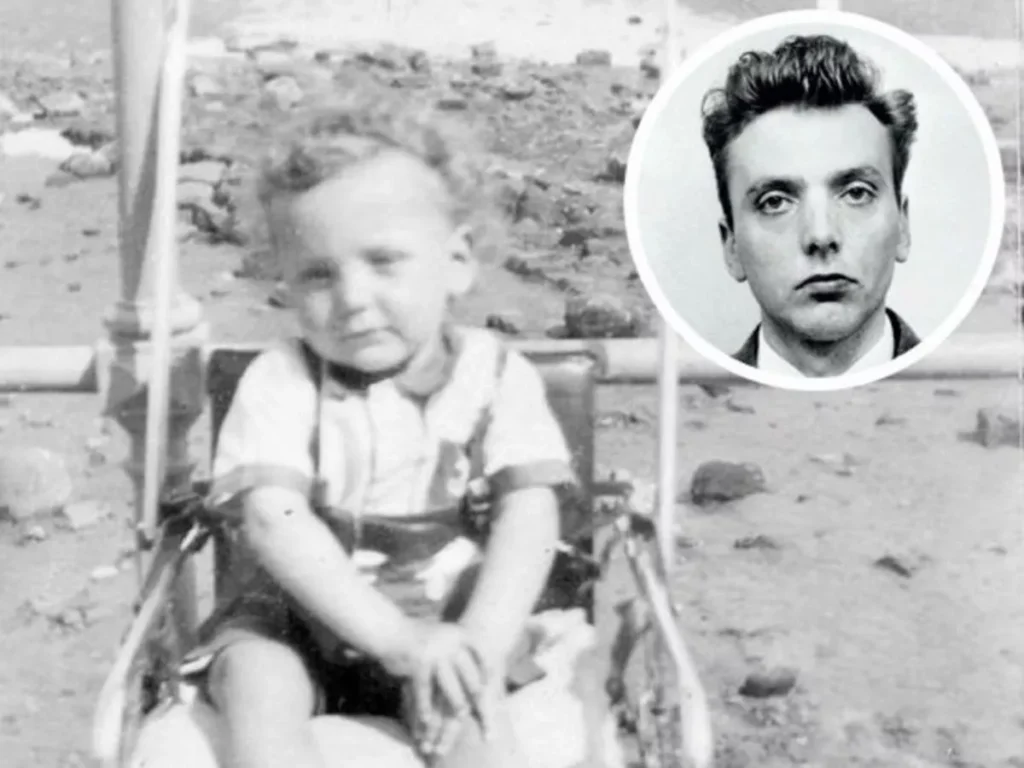
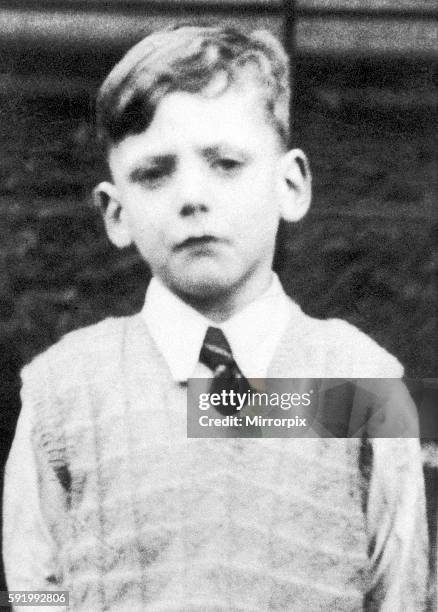
Ian Brady described in March 2003 in his letter: “It was in a tenement flat in Camden Street, comprised only of a front and back room with recessed beds in each, and a catching range in the back room used for cooking heating and even fire light. The communal atmosphere listened to the radio. No one had TVs in those days. I had a happy childhood in the Gobles and returned to it every year.”
There is one incident in his childhood which he believed had a profound effect on him. One day when he was out as a child of six years old, he found a horse in the streets that was lying on its side, still tethered to the cart it was carrying. The horse was suffering. The horse had hurt itself. Ian Brady said he remembered looking into the horse’s eyes as he touched his head, and he could see the terror in the horse’s eyes. When men came to erect a tent around the horse, he knew that they would have to kill it. He ran home crying and that memory stayed with him for the rest of his life. There are conflicting stories about his treatment of animals. He reportedly pleaded with God to save an ill dog. When the dog died, that was proof to him that there was no God. It could happen, but it only proves how manipulative Brady was. Ian Brady actually displayed tendencies of cruelty to animals in his early years. That is often seen in sadists. Brady reportedly said: “I’ve thrown cats out of the window and things like that. Everybody did in the Gorbals.” It’s widely believed that Ian Brady did kill cats when he was a child. One day he was playing this disuse bomb size and he found a cat which he trapped in a plastic bag. He then spent several hours with the cat, watching it gasp for breath, playing with it. After he even finished playing with the cat, he poured it out of the plastic bag and into a makeshift too which he blocked to either end with bricks. Over the next few days, Brady would return periodically to the site, to check that the cat was still alive, and still struggling. Ian Brady committed unspeakable sadistic acts and it is almost impossible that he loved animals at any point of his life.
In 1947, his adopted family moved to a much better area of Glasgow. The Sloan family had four children and one of the girls had a couple of children herself, two boys. Brady would always hide money around their bedroom for them. He seemed very fond of them.
Sloans took the whole family on a picnic up to Loch Lomond and they picnicked there with their sandwiches and their flasks of tea. And Brady, 9, climbed the Hills and he was looking down at the world from there. He had never seen wide open spaces before. He had never seen nature. He loved nature. Recalling his visits Loch Lomond, Ian said: “It was as low I had suddenly stepped through an invisible barrier and had arrived in a different dimension. I was encountering the naked essence of life itself.” He described himself as better than the maggots below. He was special. He was unique. And that’s something we see in Narcissistic Personality Disorder. We can’t possibly diagnose a child with Narcissistic Personality Disorder, but what we see here is the beginning of a very troubling personality. There was something in Brady that created the man he was.
He was intellectually quite bright and won score prizes. He formed various friendship groups. One of the key friendships groups, however, was when they started going around in gangs and doing shoplifting, which he started to do at his secondary school and that is the beginning of the move into criminality. It was straightforward teenage crime which they did for a mixture of thrill and making money. His first recorded burglary was when he was nine years old. Although, on that occasion, he didn’t actually steal anything. He exhibited early behavior problems.
Though later on he said he didn’t do it for any thrill, he just wanted to get stuff for free.
Ian Brady and his friends used to play a game called “catching a hodgy,” so they would wait on a street corner, wait for a lorry or a van to slow down, to go around the corner and then jump on the back, holding onto the spare tire or whatever they could grab onto. One day one of his friends died and actually went underneath the lorry. It was Brady’s first glimpse of death, but he didn’t actually see the court. He just saw the discarded shoe which was covered in blood. We know now from lots of studies into trauma and childhood that the more trauma a child suffers the more impact it will have on them later in life, particularly when we look at things like complex trauma whereas it’s not just one single episode of trauma, it’s layers of difficulties and traumatic experiences. If a child is in a very difficult environment, plus suffers trauma, plus has very limited attachment, it will change the way the brain develops. It’s layers of damage that then will be evident later on in adulthood. We can never put too much emphasis on childhood, because nature and nurture are intertwined. Childhood is going to impact who we become as adults. We’re like little sponges when we’re children, so we are going to absorb everything that happens to us, and the thoughts and emotions that we go through as a child.
In 1950, Ian Brady passed his 11 which was progressive examination at school and he enrolled at Shawlands Academy which is classed as a Grammar school in England. School mates was regarding him as strange individual. He was obsessed by Nazism, extreme things. They looked upon his as being weird.
In 1951, Ian Brady appeared in juvenile court Charlesworth for house breaking and various other crimes. He undoubtedly embarked on crime when he was at school. He always wanted more. More clothes, more money. He became a persistent offender. The Sloan family was dismayed, because they’d had very high hopes for him, because he was clever and he’d gone to a selective school, and they wanted him to do well in life.

The Sloane said he could no longer stay with them. Ian Brady was very unhappy about that and he said he went back to stay there reluctantly. Although the sentencing judge in Scotland may have hoped that sending Brady to Manchester would cure him of his criminal behaviors, it did not and he continued to burglarize homes and businesses. He would get into fights. He would drink heavily. In December, he moved in with his mother and stepfather. And this is when he takes the name Brady. He was very proud of his Scottish accent. It made him different. Some experts believe that Ian Brady experienced at least psychological abuse, although he claimed his childhood was good. Research shows that psychological abuse is linked with serial killers who go on to torture their victims. Also, many wouldn’t be a surprised, if he had experienced other forms of abuse as well. He had to go back and live with his mother in Manchester who by then had taken up with a man called Brady. In return his stepfather got him a job as a porter, but despite the reason he came to Manchester in the first place, his life as petty criminal continued. It was in that job where he stole 44 pounds worth of lead seals and that’s what got him sent to Boston, at Manchester Crown Court. In January the 10th 1956, he went to prison. He became friendly with other inmates. He fantasized about committing robbery. Prison system in that era was totally different from now. It was more about punishment. There was nothing there about reforming and really they could be seen as an Academia for crime. Unfortunately for Ian, his time in Boston did nothing to correct his deviant behaviors, in fact, he was taught in how to be a better criminal. After his release from Boston in 1959, Ian Brady didn’t want a conventional job. Working class people did manual work and he didn’t want it.
In another letter written in April 2003, he began to look at the questions of why he behaved as he did, why became who he was. “I had a happy childhood and loved the family. When free, I kept in regular contact with all and returned to Glasgow as often as possible, even if it meant driving there and back within 24 hours a journey of over 400 miles. So searching for the fashionable stereotypical excuses and scapegoats in childhood would be fruitless in my case. Thank you.” The same clamed serial killer Ted Bundy, although it was proven false. He has also Narcissistic Personality Disorder. Ted Bundy was also illegitimate child at the same time as Brady. One of the biggest misconceptions of Narcissistic Personality Disorder is that it develops as a result of “too good parents”. It’s the opposite. So we can assume that a nurturing, loving working class family wasn’t nurturing and loving.
Brady took work at Millward Merchandise. He was a stock clerk. He wanted to have a kind of job where you wore a white shirt every day.

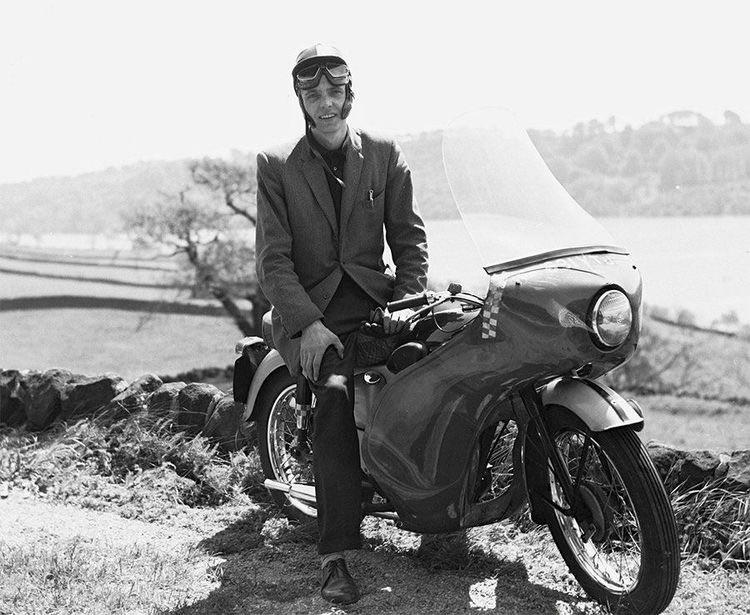
It’s hard to think of this sadistic man as being a small, powerless, disgruntled child, but we have to, if we want to understand and prevent horrific crimes in the future. Ted Bundy was also preoccupied with his self-image and he was a sadist as well. He needed to find some way to overcome low self-esteem and one way was to focus on his intelligence, because he was intelligent. He even went to the school for gifted children, so this was something he could realistically grasp and hold on to boost his self-esteem. Ted Bundy was educated and was trying hard to succeed academically.
On the 21st of December 1960, Myra Hindley, 18, was interviewed for a job at Millwoods as a typist. The first day she met Ian Brady she immediately became infatuated with Brady. However, he didn’t even notice her. But this in fact made her infatuation deepen. In the diaries at the time, she revealed an almost schoolgirl-like innocence regarding courtship and romance. She was writing in her diaries “Ian looked at me today,” “Why hasn’t Ian looked at me today.” “I blushed when Ian smiled at me today.” Brady was certainly not initially attracted to her, but became attracted to the fact that she was devoted to him. That’s very seductive. Somebody being devoted to you. Ian Brady saw in Myra Hindley a kindred spirit, but pivotally, he saw somebody that he could mold in his own image.
Together they committed acts of unimaginable horror.
In 1961, there was unrequited relationship between Ian Brady and Myra Hindley. As far as he was concerned, it didn’t exist at all. He wasn’t interested in a relationship. She was just another member of the office stuff. It was a small company and at lunchtime, they’d sit around, having their sandwiches and playing cards. He was angry often and she knew very quickly that he was a man of temper. It wasn’t until a Christmas party of 1962 when the whole office went out together, and got somewhat the worst for wear that he walked her home and, in fact, they walked to another pub and carried on drinking. He started then expounding to her his views on the world. It grew gradually. They watched the Nuremberg rallies. He was bringing in his ideas about death, about human beings being irrelevant and you can dispose of them. She became part of his cult.

He was a virgin when he met her. He may have had homosexual encounters. She was also a virgin. Myra Hindley had more human relations, Brady’s human relations were sparse. He had had a girlfriend and he threatened her with a knife, because she attended a dance with another boy. That kind of man is what we now call a coercive controlling individual. Myra had had some boyfriends. At 17, Hindley became engaged after a short courtship but called it off several months later after deciding the young man was immature and unable to provide her with the life she wanted. There have been many attempts to present Myra as a victim, it was actually mutual beneficial relationship. She wasn’t submissive, she wanted it. They were happy with their places.
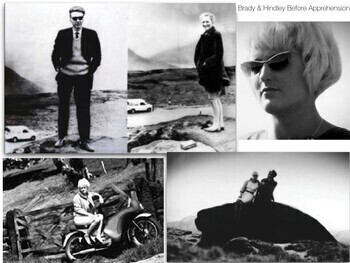
Their relationship went to the extent of obsession with pornography, to the extent of shutting out the world. At the age of 12 to 13, Brady started having violent sexual fantasies. He had fantasies about killing people. From literature we know that many people have fantasies and some of those fantasies are sometimes quite extreme, but they never go on to enact that fantasy. His fantasies were sadistic and he started to look at ways that he could fulfill those fantasies. He didn’t believe in concept of straight or gay, even in the 1950s. Sex was an indulgence which could be practiced with whoever was there. And it wasn’t anything that should be subjected to the social controls or social norms. This is how they introduced children. His behavior in general, but here especially, his disregard for social norms is so obvious and it is one of the symptoms of antisocial personality. When he met Myra Hindley he talked about those fantasies. They enacted sexual fantasies together and he actually started to introduce murder. Their relationship was profound, deep and affectionate in their own way. Myra Hindley was also an object on which he could act out his perverted sexual desires. Brady would anally rape Myra. He would bite her during sex. He would beat her and he would gain sexual satisfaction from doing so. He certainly formed an attachment with Myra but this attachment was purely a means to an end, an attachment that allowed him to carry out his sadistic fantasies. Myra was an opportunity for him to accelerate his deviance. Deviance was his real attachment.
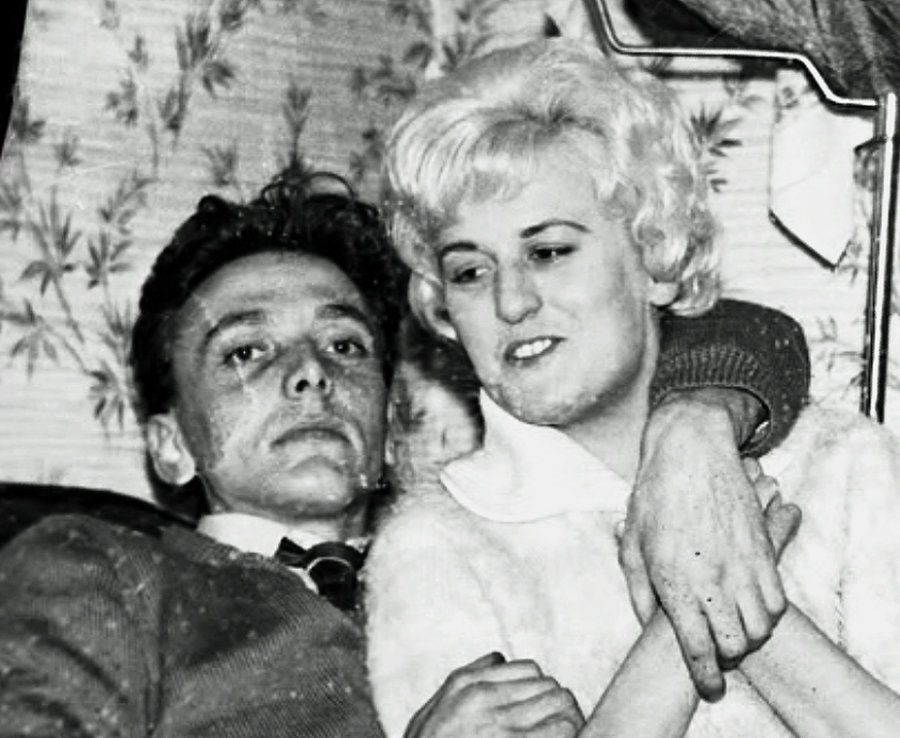
Myra Hindley was born in Crumpsall on 23 July 1942. She was raised in Gorton, then a working-class area of Manchester. Her father was an alcoholic who was frequently violent towards his wife and children. The family home was in poor condition, and Hindley was forced to sleep in a single bed next to her parents’ double bed. Their living situation deteriorated further when Hindley’s younger sister, Maureen, was born. The following year, five-year-old Myra was sent to live nearby with her grandmother. Her father expected his daughter to be equally tough; he taught her to fight and insisted that she stick up for herself. When Hindley was aged about eight, a local boy scratched her cheeks, drawing blood. She burst into tears and ran to her father, who threatened to “leather” her if she did not retaliate; Hindley found the boy and knocked him down with a series of punches. Malcolm MacCulloch, professor of forensic psychiatry at Cardiff University, has written that Hindley’s “relationship with her father brutalised her … She was not only used to violence in the home but rewarded for it outside. When this happens at a young age, it can distort a person’s reaction to such situations for life.” In June 1957, one of Hindley’s closest friends, 13-year-old Michael Higgins, invited Hindley to go swimming with friends at a local disused reservoir, but she instead went out elsewhere with another friend. Higgins drowned in the reservoir; and Hindley—a good swimmer—was deeply upset and blamed herself. Hindley was increasingly drawn to the Roman Catholic Church and began taking instruction for formal reception into the Church soon after Higgins’ funeral.



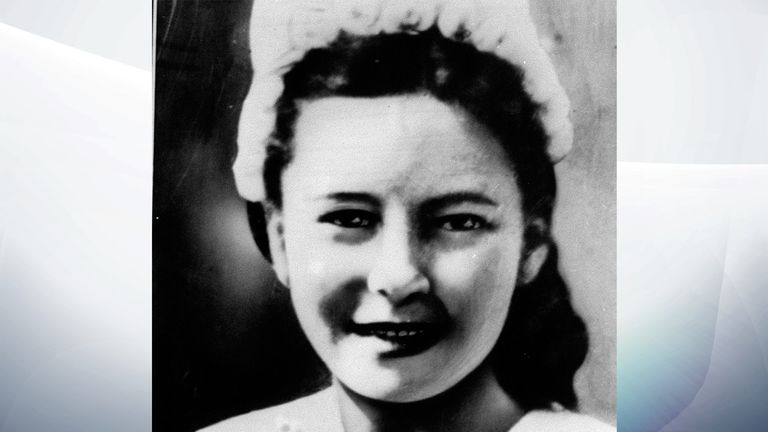
By June 1963, Brady had moved in with Hindley at her grandmother’s house in Gorton, and on 12 July the two murdered their first victim, 16-year-old Pauline Reade. Reade had attended school with Hindley’s younger sister Maureen and had also been in a short relationship with David Smith, a local teenager with three criminal convictions for minor crimes. Brady saw a young girl and signalled Hindley, who did not stop because she recognised the girl as an eight-year-old neighbour of her mother. Brady signaled again Hindley to stop for 16-year-old Pauline Reade, a schoolmate of Hindley’s sister Maureen on her way to a dance; Hindley offered Reade a lift. At various times Hindley gave conflicting statements about the extent to which she, versus Brady, was responsible for Reade being selected as their first victim, but said she felt that there would be less attention given to the disappearance of a teenager than of a young child. Once Reade was in the van, Hindley asked her to help in searching Saddleworth Moor for an expensive lost glove; Reade agreed and they drove there. When Brady arrived on his motorcycle, Hindley told Reade he would be helping in the search. Hindley later claimed that she waited in the van while Brady took Reade onto the moor. Brady returned alone after about thirty minutes, and took Hindley to the spot where Reade lay dying; Reade’s clothes were in disarray and she had been nearly decapitated by two cuts to the throat, including a four-inch incision across her voice box “inflicted with considerable force” and into which the collar of her coat and a throat chain had been pushed. When Hindley asked Brady whether he had raped Reade, Brady replied, “Of course I did.” Hindley stayed with Reade while Brady retrieved a spade he had hidden nearby on a previous visit, then returned to the van while Brady buried Reade. In Brady’s account, Hindley was not only present for the attack, but participated in the sexual assault. Police found nobody who had seen Reade immediately before her disappearance, and although the 15-year-old Smith was questioned by police, he was cleared of any involvement in her death.
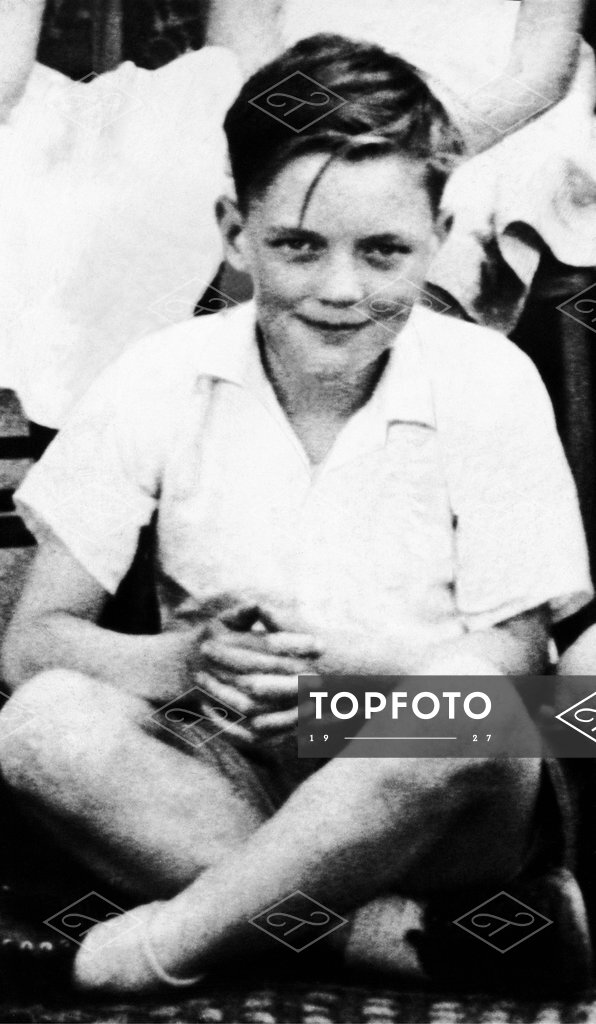
Their next victim, 12-year-old John Kilbride, was lured away from a market in the town of Ashton-under-Lyne on 23 November and murdered on Saddleworth Moor, where his body was buried. A huge search was undertaken, with over 700 statements taken and 500 “missing” posters printed. Eight days after he failed to return home, 2,000 volunteers scoured waste ground and derelict buildings. Brady and Hindley offered 12-year-old John Kilbride a lift home, also promising him a bottle of sherry. Once Kilbride was inside Hindley’s hired Ford Anglia car, Brady said they would have to make a detour to their home for the sherry. Brady then suggested another detour, this time to search for a glove Hindley had lost on Saddleworth Moor. When they reached the moor, Brady took Kilbride with him while Hindley waited in the car. Brady then sexually assaulted Kilbride and tried to slit his throat with a six-inch serrated blade before strangling him with a shoelace or string. He then buried his body in a shallow grave and, at some point afterwards, photographed Hindley and her pet dog standing atop the recently-disturbed ground. Hindley hired a vehicle a week after Kilbride went missing, and again on 21 December, apparently to make sure the burial sites at Saddleworth Moor had not been disturbed. In February 1964, she bought a second-hand Austin Traveller but soon after traded it for a Mini van.

Keith Bennett, also aged 12, disappeared. Early in the evening of 16 June 1964, Hindley asked 12-year-old Keith Bennett, who was on his way to his grandmother’s house in Longsight, for help in loading some boxes into her Mini Pick-up, after which she said she would drive him home. Brady was in the back of the van. Hindley drove to a lay-by on Saddleworth Moor and Brady went off with Bennett, supposedly looking for a lost glove. After about thirty minutes Brady returned alone, carrying a spade that he had hidden there earlier, and, in response to Hindley’s questions, said that he had sexually assaulted Bennett and strangled him with a piece of string. His stepfather, Jimmy Johnson, became a suspect; in the two years following Bennett’s disappearance, Johnson was taken for questioning on four occasions. Detectives searched under the floorboards of the family home, and on discovering that the houses in the row were connected, extended the search to the entire street.
Maureen Hindley married David Smith on 15 August 1964. Brady and Smith had met and Brady was apparently impressed by Smith’s demeanour. The two talked about society, the distribution of wealth and the possibility of robbing a bank. The young Smith was similarly impressed by Brady, who throughout the day had paid for his food and wine. The trip to the Lake District was the first of many outings.
In 1964, Hindley, her grandmother and Brady were rehoused as part of the postwar slum clearances in Manchester. Brady and Hindley became friendly with Patricia Hodges, an 11-year-old girl who were their neighbor. Hodges accompanied the couple on their trips to Saddleworth Moor to collect peat, something that many householders on the new estate did to improve the soil in their gardens, which were full of clay and builder’s rubble. The couple never harmed Hodges, since she lived only a few doors away, which would have made it easier for police to solve any disappearance.
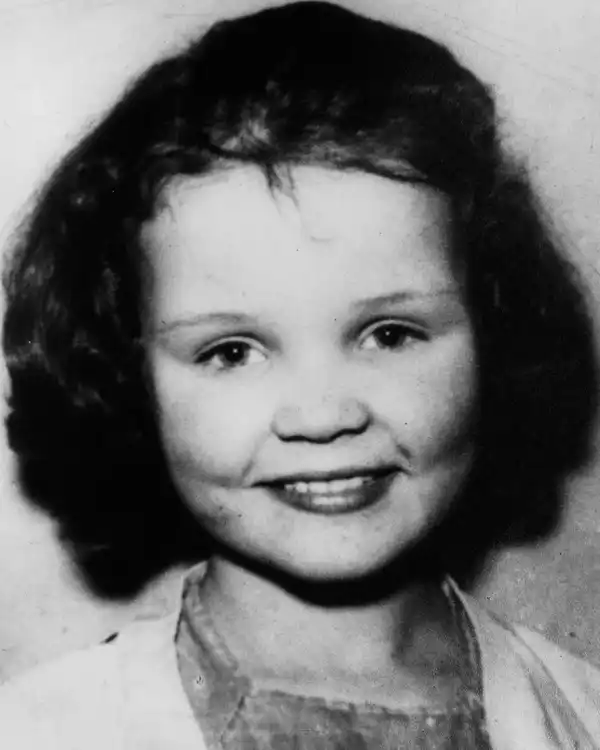
In 1964, Hindley left her grandmother at a relative’s house and refused to allow her back to her home. That same day, 10-year-old Lesley Ann Downey disappeared. Despite a huge search, she was not found. Her stepfather, Alan West, was treated as a suspect by police and repeatedly questioned over her disappearance, but no evidence was uncovered and the disappearance remained unsolved for nearly a year. The following day, Hindley brought her grandmother back home. Brady and Hindley visited a funfair in Ancoats on 26 December 1964 and noticed that 10-year-old Lesley Ann Downey was apparently alone. They approached her and deliberately dropped some shopping they were carrying, then asked her for help in taking the packages to their car, and then to Wardle Brook Avenue. At the house, Downey was undressed, gagged and forcibly posed for photographs before being raped and killed, perhaps strangled with a piece of string. The attack was recorded on a reel-to-reel audio tape, with both Brady and Hindley’s voices appearing, as their victim screamed and begged for mercy. Hindley later maintained that she went to run a bath for Downey and found the victim dead when she returned; Brady claimed that Hindley committed the murder. The following morning Brady and Hindley drove Downey’s body to Saddleworth Moor and buried her—naked with her clothes at her feet—in a shallow grave.
Brady gave Smith books to read, and the two discussed robbery and murder.
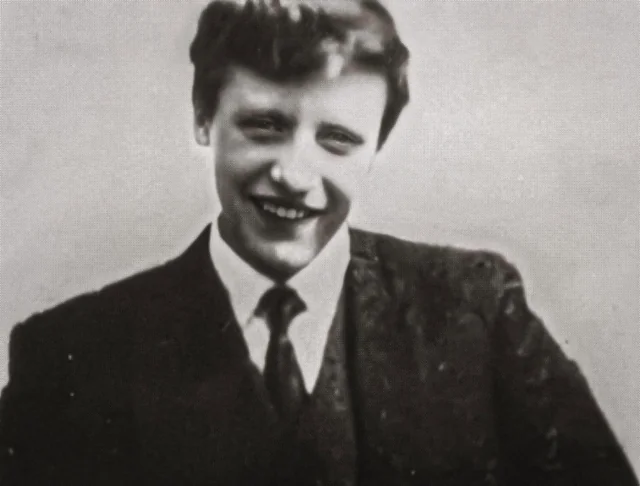
On the evening of 6 October 1965, Hindley drove Brady to Manchester Central railway station, where she waited outside in the car whilst he selected a victim. After a few minutes Brady reappeared in the company of 17-year-old Edward Evans, an apprentice engineer who lived in Ardwick, to whom he introduced Hindley as his sister. Brady later claimed that he had picked up Evans for a sexual encounter. They drove to Brady and Hindley’s home at Wardle Brook Avenue, where they relaxed over a bottle of wine. At some point Brady sent Hindley to fetch Smith, her brother-in-law. Although Hindley’s family had not approved of Maureen’s marriage to Smith, Brady had been cultivating a friendship with his brother-in-law, who had become “in awe” of Brady, something that increasingly worried Hindley as she felt it compromised their safety. Hindley returned with Smith and told him to wait outside for her signal, a flashing light. When the signal came, Smith knocked on the door and was met by Brady, who asked if he had come for “the miniature wine bottles” and left him in the kitchen, saying that he was going to collect the wine. Smith later told the police: “I waited about a minute or two then suddenly I heard a hell of a scream; it sounded like a woman, really high-pitched. Then the screams carried on, one after another really loud. Then I heard Myra shout, “Dave, help him,” very loud. When I ran in I just stood inside the living room and I saw a young lad. He was lying with his head and shoulders on the couch and his legs were on the floor. He was facing upwards. Ian was standing over him, facing him, with his legs on either side of the young lad’s legs. The lad was still screaming … Ian had a hatchet in his hand … he was holding it above his head and he hit the lad on the left side of his head with the hatchet. I heard the blow, it was a terrible hard blow, it sounded horrible.”
Smith then watched Brady throttle Evans with a length of electrical cord. Brady sprained his ankle in the struggle, and Evans’ body was too heavy for Smith to carry to the car on his own, so they wrapped it in plastic sheeting and put it in the spare bedroom with the intention of disposing of it later.
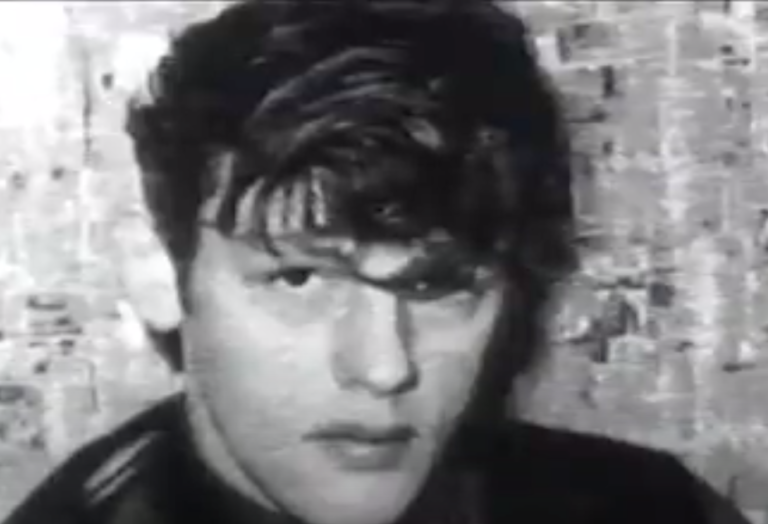
After the murder of Evans, Smith agreed to return the following morning with his dead daughter’s pram, to transport the body to the car before disposing of it on Saddleworth Moor. He arrived home around 3:00 a.m. and asked his wife to make a cup of tea, which he drank before vomiting and telling her what he had witnessed. At 6:10 a.m., having waited for daylight and armed himself with a screwdriver and bread knife – in case Brady was planning to intercept him – Smith called police from a phone box on the estate. He was picked up by a police car from the phone box and taken to Hyde police station, where he told officers what he had witnessed the previous night.
Police Superintendent Bob Talbot of the Stalybridge police division went to Wardle Brook Avenue, accompanied by a detective sergeant. Wearing a bread deliveryman’s overall on top of his uniform, he asked Hindley at the back door if her husband was home. When she denied that she had a husband or that a man was in the house, Talbot identified himself. Hindley led him into the living room, where Brady was lying on a divan, writing to his employer about his ankle injury. Talbot explained that he was investigating “an act of violence involving guns” that was reported to have taken place the previous evening. Hindley denied there had been any violence, and allowed police to look around the house. When police asked for the key to the locked spare bedroom, she said it was at her workplace; but after police offered to take her to retrieve it, Brady told her to hand it over. Evans’ body was discovered in the bedroom, and Brady was arrested on suspicion of murder. As Brady was getting dressed, he said, “Eddie and I had a row and the situation got out of hand.”
Though Hindley was not initially arrested, she demanded to go with Brady to the police station, taking her dog. She refused to make any statement about Evans’ death beyond claiming it had been an accident, and was allowed to go home on the condition that she return the next day. Over the next four days Hindley visited her employer and asked to be dismissed so that she would be eligible for unemployment benefits. On one of these occasions, she found an envelope belonging to Brady which she burned in an ashtray; she claimed she did not open it but believed it contained plans for bank robberies.
Police searching the house at Wardle Brook Avenue found an old exercise book with the name “John Kilbride”, which made them suspect that Brady and Hindley had been involved in the unsolved disappearances of other children and teenagers. Brady told police that he and Evans had fought, but insisted that he and Smith had murdered Evans and that Hindley had “only done what she had been told.”
Smith said that Brady had asked him to return anything incriminating, such as “dodgy books”, which Brady then packed into suitcases; he had no idea what else the suitcases contained or where they might be, though he mentioned that Brady “had a thing about railway stations.” A search of left-luggage offices turned up the suitcases at Manchester Central railway station on 15 October; the claim ticket was later found in Hindley’s prayer book. Inside one of the cases were—among an assortment of costumes, notes, photographs and negatives—nine pornographic photographs of a young girl, soon identified as Downey, naked and with a scarf tied across her mouth, and a sixteen-minute audiotape recording of a girl identifying herself as “Lesley Ann Weston” screaming, crying and pleading to be allowed to return home to her mother. Downey’s mother was asked by police to look at the two photographs which were deemed appropriate in order to identify her daughter, and also identified the voice from the recording too, was of her daughter.
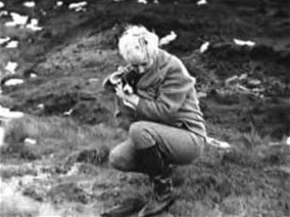
Officers making inquiries at neighboring houses spoke to Hodges, who had on several occasions been taken to Saddleworth Moor by Brady and Hindley, and was able to point out their favorite sites along the A635 road. Police immediately began to search the area, and on 16 October found an arm bone protruding from the peat, which was presumed at first to be that of Kilbride, but which the next day was identified as that of Downey, whose body was still visually identifiable; her mother was able to identify the clothing, which had also been buried in the grave.
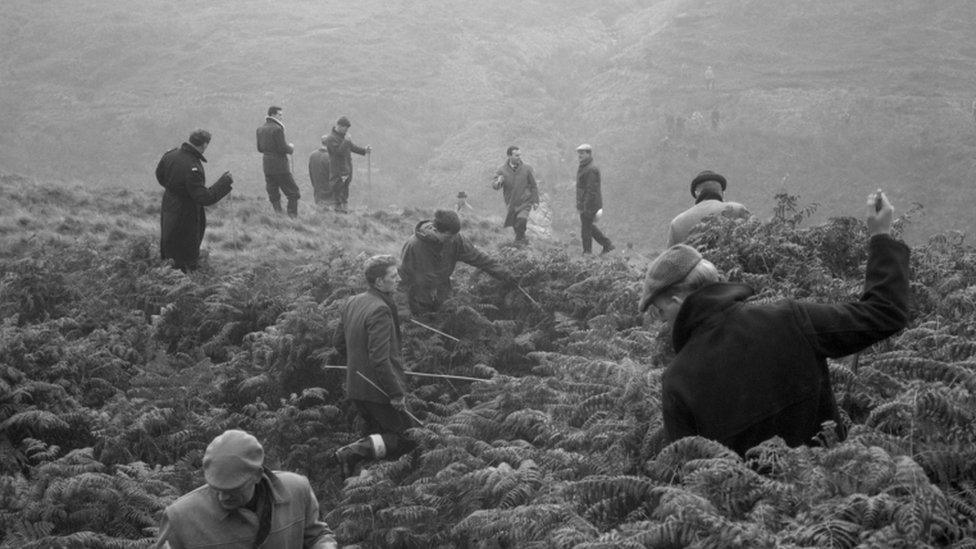
Also among the photographs in the suitcase were a number of scenes of the Moors. Smith had told police that Brady had boasted of “photographic proof” of multiple murders, and officers, struck by Brady’s decision to remove the apparently innocent landscapes from the house, appealed to locals for assistance finding locations to match the photographs. On 21 October they found the “badly decomposed” body of Kilbride, which his mother had to identify by clothing.

That same day, already being held for the murder of Evans, Brady and Hindley appeared at Hyde Magistrates’ Court charged with Downey’s murder. Each was brought before the court separately and remanded into custody for a week. They made a two-minute appearance on 28 October, and were again remanded into custody. Characterized by the press as “the most evil woman in Britain.”
The investigating officers suspected Brady and Hindley of murdering other missing children and teenagers who had disappeared from areas in and around Manchester over the previous few years, and the search continued for a while after the discovery of Kilbride’s body, but with winter setting in it was called off in November. Various newspapers were also keen to name possible further victims of the “Moors Murders”, with Reade and Bennett being two of them.
Presented with the evidence of the tape recording, Brady admitted to taking the photographs of Downey, but insisted that she had been brought to Wardle Brook Avenue by two men who had subsequently taken her away again, alive. By 2 December, Brady had been charged with the murders of Kilbride, Downey and Evans. Hindley had been charged with the murders of Downey and Evans, and being an accessory to the murder of Kilbride. At the committal hearing on 6 December, Brady was charged with the murders of Evans, Kilbride, and Downey, and Hindley with the murders of Evans and Downey, as well as with harbouring Brady in the knowledge that he had killed Kilbride. The prosecution’s opening statement was held in chambers rather than in open court, and the defence asked for a similar stipulation but was refused. The proceedings continued before three magistrates in Hyde over an eleven-day period during December, at the end of which the pair were committed for trial at Chester Assizes.
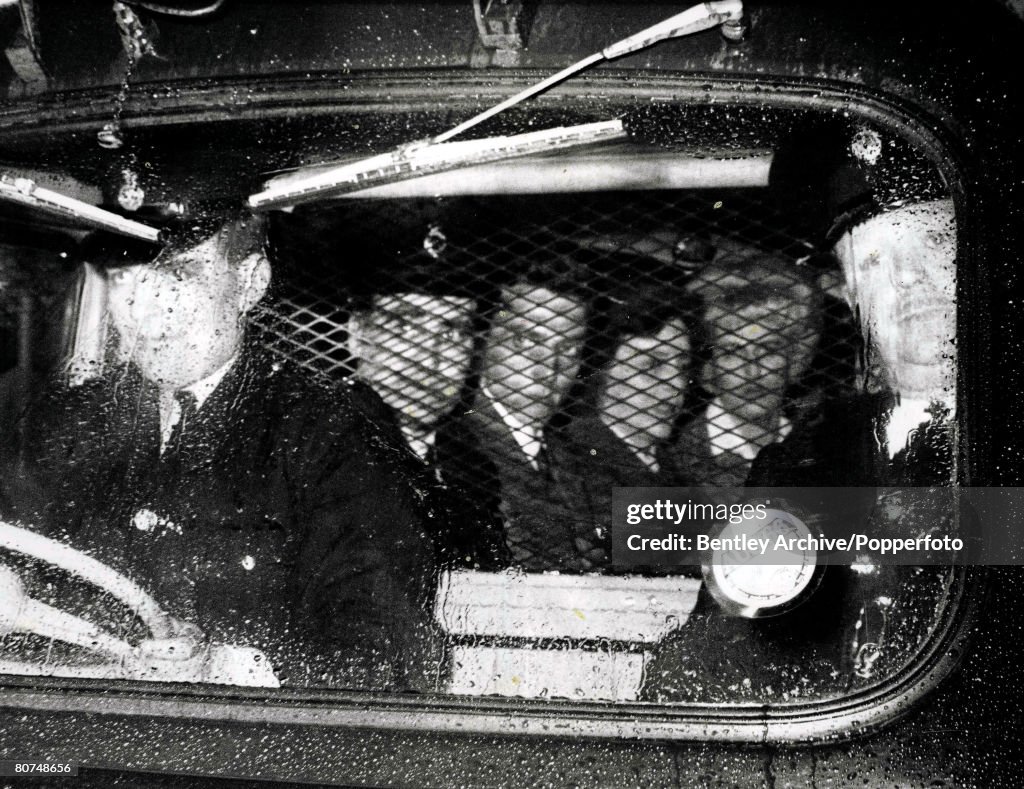
Many of the photographs taken by Brady and Hindley on the moor featured Hindley’s dog Puppet, sometimes as a puppy. To help date the photos, detectives had a veterinary surgeon examine the dog to determine his age; the examination required a general anaesthetic from which Puppet did not recover. Hindley was furious, and accused the police of murdering the dog – one of the few occasions detectives witnessed any emotional response from her. Hindley wrote to her mother:
“I feel as though my heart’s been torn to pieces. I don’t think anything could hurt me more than this has. The only consolation is that some moron might have got hold of Puppet and hurt him.”
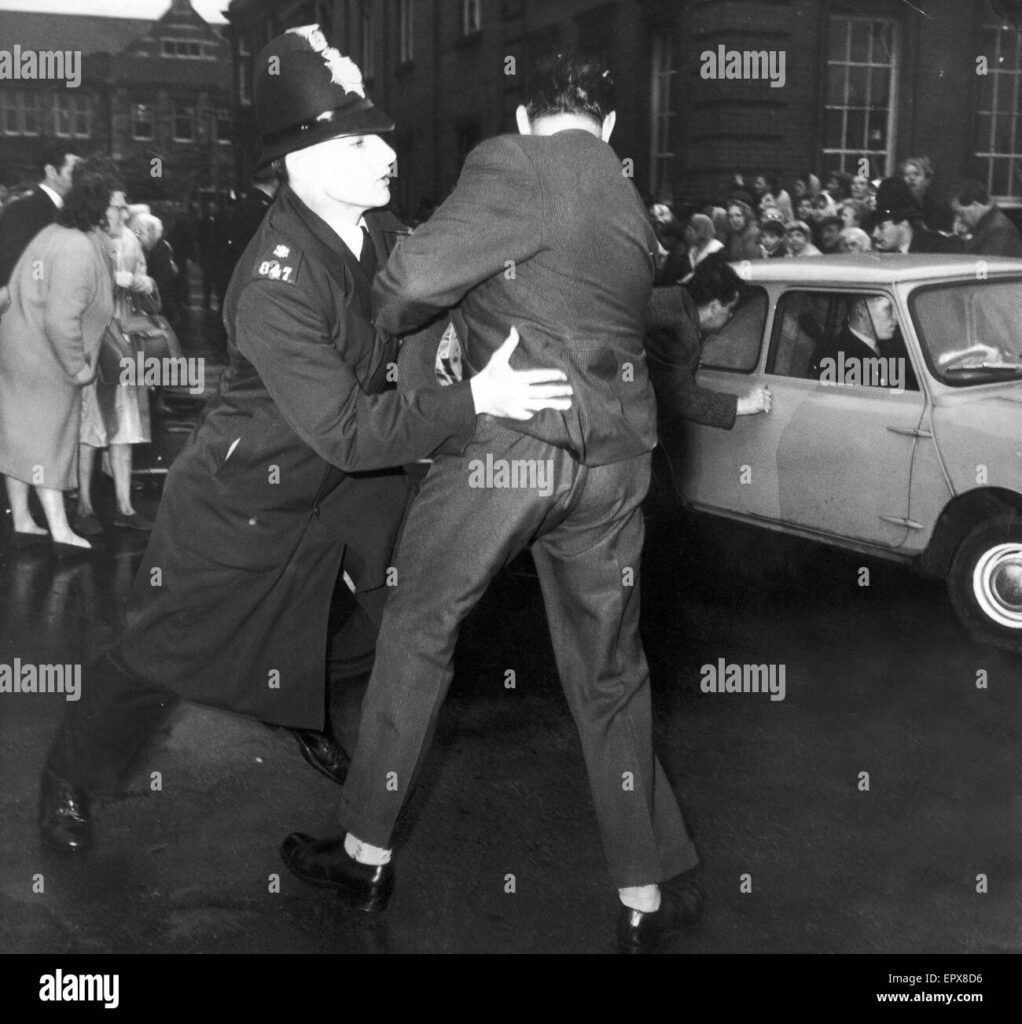
As the death penalty for murder had been abolished six months earlier, the judge passed the only sentence that the law now allowed for murder: life imprisonment. On 6 May, 1966, Brady was sentenced to three concurrent life sentences and Hindley was given two, plus a concurrent seven-year term for harbouring Brady in the knowledge that he had murdered Kilbride. Reportedly, they celebrated and reliving every murder by having sex while listening specific classical song.
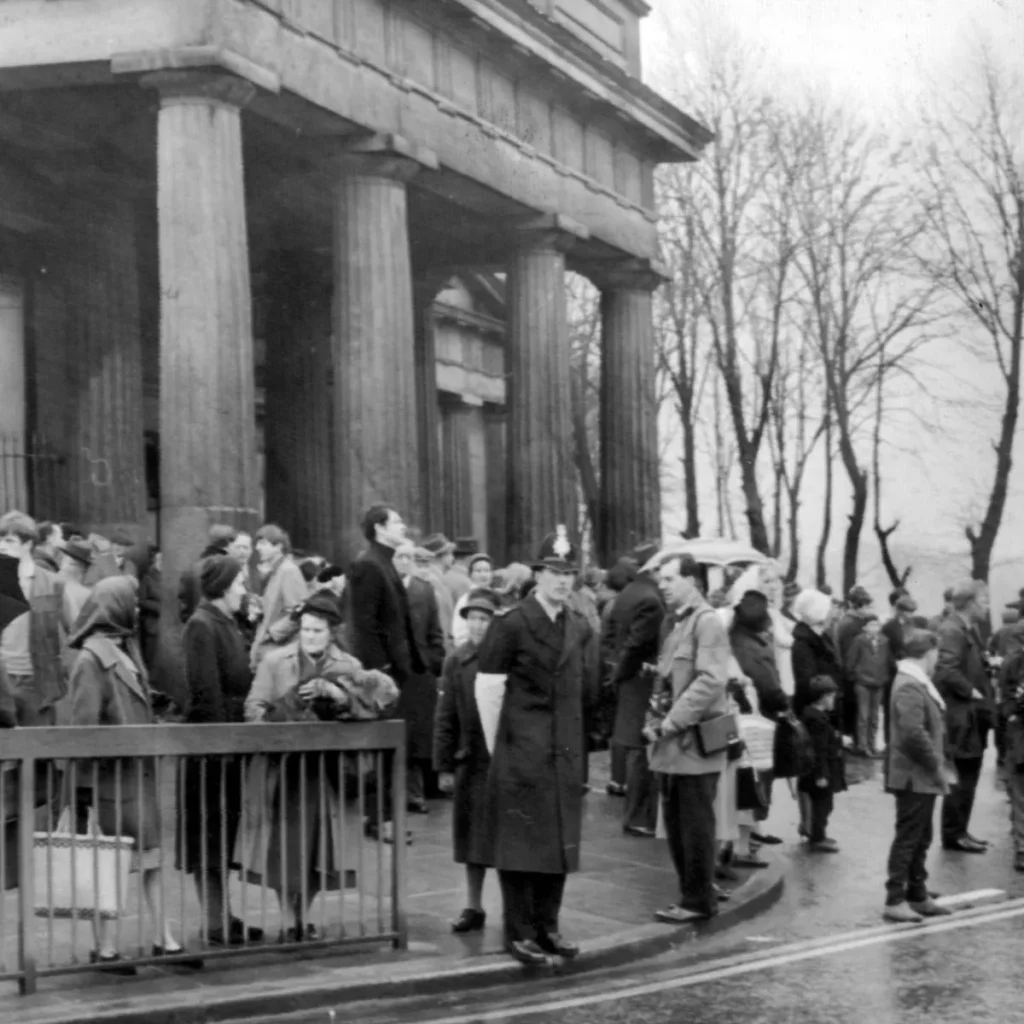
On 3 July 1985, DCS Topping visited Brady, then being held at HM Prison Gartree in Leicestershire, but found him “scornful of any suggestion that he had confessed to more murders”. Police nevertheless decided to resume their search of Saddleworth Moor, once more using the photographs taken by Brady and Hindley to help them identify possible burial sites. In November 1986, Bennett’s mother wrote to Hindley begging to know what had happened to her son, a letter that Hindley seemed to be “genuinely moved” by. It ended: “I am a simple woman, I work in the kitchens of Christie’s Hospital. It has taken me five weeks labour to write this letter because it is so important to me that it is understood by you for what it is, a plea for help. Please, Miss Hindley, help me.” Police visited Hindley – then being held in HM Prison Cookham Wood in Kent – a few days after she received the letter, and although she refused to admit any involvement in the killings, she agreed to help by looking at photographs and maps to try to identify spots she had visited with Brady. She showed particular interest in photos of the area around Hollin Brown Knoll and Shiny Brook, but said that it was impossible to be sure of the locations without visiting the moor. Home Secretary Douglas Hurd agreed with DCS Topping that a visit would be worth risking despite security problems presented by threats against Hindley. Writing in 1989, Topping said that he felt “quite cynical” about Hindley’s motivation in helping the police. Although Winnie Johnson’s letter may have played a part, he believed that Hindley, knowing of Brady’s “precarious” mental state, was concerned he might co-operate with the police and reap any available public-approval benefit. On 16 December 1986, Hindley made the first of two visits to assist the police search of the moor. Police closed all roads onto the moor, which was patrolled by 200 officers, some armed. Hindley and her solicitor left Cookham Wood at 4:30 a.m., flew to the moor by helicopter from an airfield near Maidstone, and then were driven, and walked, around the area until 3:00 pm. Hindley had difficulty connecting what she saw to her memories, and was apparently nervous of the helicopters flying overhead. The press described the visit as a “fiasco”, a “publicity stunt”, and a “mindless waste of money”, but DCS Topping defended it, saying “we needed a thorough systematic search of the moor … It would never have been possible to carry out such a search in private.” DCS Topping continued to visit Hindley in prison, along with her solicitor Michael Fisher and her spiritual counsellor, Peter Timms, who had been a prison governor before becoming a Methodist minister. On 10 February 1987 Hindley formally confessed to involvement in all five murders, but this was not made public for more than a month. The tape recording of her statement was over seventeen hours long; Topping described it as a “very well worked out performance in which, I believe, she told me just as much as she wanted me to know, and no more”. He added that he “was struck by the fact that [in Hindley’s telling] she was never there when the killings took place. She was in the car, over the brow of the hill, in the bathroom and even, in the case of the Evans murder, in the kitchen”; he felt he “had witnessed a great performance rather than a genuine confession”.
Police visited Brady in prison again and told him of Hindley’s confession, which at first he refused to believe. Once presented with some of the details that Hindley had provided of Reade’s abduction, Brady decided that he too was prepared to confess, but on one condition: that immediately afterwards he be given the means to commit suicide, a request with which it was impossible for the authorities to comply. Brady only ever made formal confession in the presence of his solicitor legal advisors. It was a tape recorded confession at hospital. But it was only a case of “Yes, I admit that I murdered these children.” No detail was ever provided. Ian Brady: “I’ll spell the beans if you’ll give me the means whereby I can kill myself.”
At about the same time, Johnson sent Hindley another letter, again pleading with her to assist the police in finding the body of her son Keith. In the letter, Johnson was sympathetic to Hindley over the criticism surrounding her first visit. Hindley, who had not replied to the first letter, responded by thanking Johnson for both letters, explaining that her decision not to reply to the first resulted from the negative publicity that surrounded it. She claimed that, had Johnson written to her fourteen years earlier, she would have confessed and helped the police. She also paid tribute to DCS Topping, and thanked Johnson for her sincerity. Hindley made her second visit to the moor in March 1987. This time, the level of security surrounding her visit was considerably higher. She stayed overnight in Manchester, at the flat of the police chief in charge of GMP training at Sedgley Park, Prestwich, and visited the moor twice. Hindley confirmed to police that the two areas in which they were concentrating their search—Hollin Brown Knoll and Hoe Grain—were correct, although she was unable to locate either of the graves. She did, though, later remember that as Reade was being buried she had been sitting next to her on a patch of grass and could see the rocks of Hollin Brown Knoll silhouetted against the night sky.
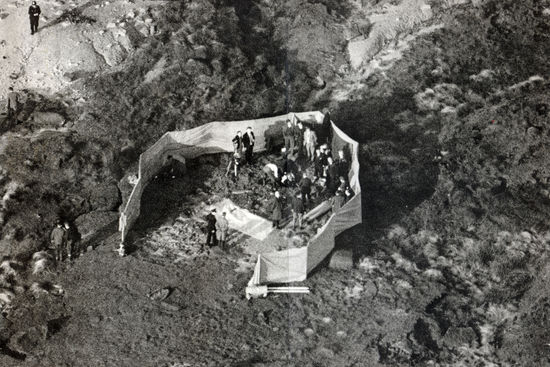
In April 1987, news of Hindley’s confession became public. Amidst strong media interest Lord Longford pleaded for her release, writing that continuing her detention to satisfy “mob emotion” was not right. Fisher persuaded Hindley to release a public statement, which touched on her reasons for denying her guilt previously, her religious experiences in prison, and the letter from Johnson. She said that she saw no possibility of release, and also exonerated Smith from any part in the murders other than that of Evans. Over the next few months interest in the search waned, but Hindley’s clue had focused efforts on a specific area. On 1 July, after more than 100 days of searching, they found Reade’s body.

Brady had been co-operating with the police for some time, and when this news reached him he made a formal confession to DCS Topping, and in a statement to the press said that he too would help police in their search. He was taken to the moor on 3 July 1987, but seemed to lose his hearings, blaming changes in the intervening years; the search was called off at 3:00 pm, by which time a large crowd of press and television reporters had gathered on the moor. DCS Topping refused to allow Brady a second visit to the moor before police called off their search on 24 August 1987. Brady was taken to the moor a second time on 8 December 1987, and claimed to have located Bennett’s burial site, but the body was never found.
Although Brady and Hindley had confessed to the murders of Reade and Bennett, the Director of Public Prosecutions (DPP) decided that nothing would be gained by a further trial; as both were already serving life sentences no further punishment could be inflicted.
In 2008 her solicitor, Andrew McCooey, reported that Myra Hindley told him:
“I ought to have been hanged. I deserved it. My crime was worse than Brady’s because I enticed the children and they would never have entered the car without my role… I have always regarded myself as worse than Brady.”
Myra Hindley did everything to get out of prison. She had fallen in love with one of her prison warders, Patricia Cairns. Hindley planned a prison escape. In 2002 Hindley died.
Brady spent nineteen years in mainstream prisons before being diagnosed as a psychopath in November 1985 and sent to the high-security Park Lane Hospital, now Ashworth Hospital, in Maghull, Merseyside; he made it clear that he never wanted to be released. Brady became the longest-serving prisoner in England and Wales.
Although Brady refused to work with Ashworth’s psychiatrists, he occasionally corresponded with people outside the hospital—subject to prison authorities’ censorship — including Lord Longford, writer Colin Wilson, and various journalists. In one letter, written in 2005, Brady claimed that the murders were “merely an existential exercise of just over a year, which was concluded in December 1964”. By then, he claimed, he and Hindley had turned their attention to armed robbery, for which they had begun to prepare by acquiring guns and vehicles.
During several years of interactions with forensic psychologist Chris Cowley, including face-to-face meetings, Brady told him of an “aesthetic fascination [he had] with guns”, despite his never having used one to kill. He complained bitterly about conditions at Ashworth, which he hated. According to Cowley, Brady regretted Hindley’s imprisonment and the consequences of their actions, but not necessarily the crimes themselves. He saw no point in making any kind of public apology; instead, he “expresse[d] remorse through actions” In 1999, his right wrist was broken in what he claimed was an “hour-long, unprovoked attack” by staff. Brady subsequently went on hunger strike, but while English law allows patients to refuse treatment, those being treated for mental disorders under the Mental Health Act 1983 have no such right if the treatment is for their mental disorder. He was therefore force-fed and transferred to another hospital for tests after he fell ill. Brady recovered and in March 2000 asked for a judicial review of the legality of the decision to force-feed him, but was refused permission. “Myra gets the potentially fatal brain condition, whilst I have to fight simply to die. I have had enough. I want nothing, my objective is to die and release myself from this once and for all. So you see my death strike is rational and pragmatic. I’m only sorry I didn’t do it decades ago, and I’m eager to leave this cesspit in a coffin.” In 2001, Brady wrote The Gates of Janus, which was published by the US underground publisher Feral House. In 2012, Brady applied to be returned to prison, reiterating his desire to starve himself to death. He claimed that he suffered not from paranoid schizophrenia, as his doctors at Ashworth maintained, but a personality disorder. Brady’s application was rejected and the judge stated that he “continues to suffer from a mental disorder which is of a nature and degree which makes it appropriate for him to continue to receive medical treatment”.
After receiving end-of-life care, Brady died of restrictive pulmonary disease at Ashworth Hospital on 15 May 2017; the inquest found that he died of natural causes and that his hunger strike had not been a contributory factor.
Cameron Boyd, Forensic psychiatrist (ret.): “His psychopathology with regard to the pedophilia, the homicide, different than anything I’d ever seen.” It is interesting fact that after raiding Ted Bundy’s flat, FBI agents stated that they found pictures of young girls, although his victims were adult women, except the last one who was only 12.
Interview with Ian Brady’s former psychiatrist Professor Jeremy Coid: Psychopath is somebody that has four main sort of characteristics of abnormal personality traits and behavior. The first is they have a particular interpersonal style which is considered to be exploitative of others, very egocentric, narcissistic, somewhat grandiose to be able to gift to the gab being very glib but quite superficial, particular ability to manipulate others in social interactions. That’s one component. The other component is that they have an abnormal affect, I mean in terms of emotions. Their emotional inner world is quite abnormal and they typically are cold and callous, and do not have an emotional depth, quite ruthless. It’s a feeling that just not there. The third part is that many are highly impulsive and you look at that over the life course. And then the third part which is a bit debatable, is a particular history of criminality, so multiple types of different crimes, failures of supervision after committing a crime and crime from an early age. Mr. Brady would not score particularly highly on that. He wasn’t actually caught repeatedly for lots of different crimes, but the other sides of his, particularly the first two I described – the affective abnormality and his sort of interpersonal style – a very strong very apparent. (referring to Ian Brady’s psychopathy) …exceptionally severe. Apart from this sort of rather unrealistic scoring system, we have where we perhaps attribute too much to the criminal history. But he is very severely psychopathic, in my opinion. – Could you describe to me your first meeting with Ian Brady? What was the atmosphere like? – Well, the atmosphere that was, when I first met him, he was actually quite pleasant and courteous and looked to me rather like a rather shabby Oxford Dawn in a sports jacket. I had a sort of shock of gray hair. He was clearly aged by that time, but he had a sort of, had it not been for some of the shabbiness of the clothes, he might have actually been slightly more sort of impressive but he certainly had a particular demeanor. What happened during the interview was that it became clear it was very difficult to interrupt him. This is a man who was so self-centered that he did not want to do anything but to talk about himself and about his feelings for others. His negative feelings towards others. So it was a very difficult interview in that sense. – What was Brady’s demeanor towards you? – Towards me, I think that… I don’t think I particularly mattered very much. I was there for a purpose for something he wanted which was to have a public mental health review tribunal. I think, if I’m honest, it would be my reaction to him, which is perhaps my internal reaction, and it’s difficult to explain this, because it is a professional matter, but I think that if you’re an experienced forensic psychiatrist, it’s important to be aware of how your patients, your clients make you feel and make you feel towards them, and obviously if they made you afraid, they didn’t make me afraid at all, but he produced me in a profoundly negative feeling. A feeling of personal dislike of him, that grew and grew as the interview went on and that is not a very helpful feeling to have as a as a forensic psychiatrist, and it’s a sort of technical term in psychodynamics called counter transference. And so I actually watch your, what I believed, I was experiencing he was doing something to me, to my inner world in terms of my relationship to him, and it became quite clear that he was attempting to control me throughout the interview as much as he could. And that, as time went on, but I was very struck that I’ve seen offenders who committed extremely unpleasant and sometimes possibly even worse murders, but have not managed to produce such a negative reaction in me. – Were you vetted at all before meeting him? – No, no, no. It’s a fairly typical routine type of procedure where an external expert, a professional like myself, comes along to do an interview this time on this occasion for his solicitor. – Did he ever go into detail about his crimes or reference them in any way? – No, he did not go in detail and I’m not aware that he ever really has in the detail that one would like. I think that the exact motivation of his criminality in terms of his homicides has never been entirely revealed… He’s considered, has been considered by colleagues on the basis of the information available and what is known about the offenses, to be a sadistic murderer. So right from the start, when he was on remand, there are reports which I’ve read, but they assume that he has a perverse in a world and that the motivation for his crimes are sadistic pleasure, and murdering children, and quite possibly torture. But what he said himself he denied that he tortured them mentally. But he was implying to me that he scared them to death basically, and that was the form of torture as what he told me at interview, that he carried out on the children. It is widely believed that he sexually assaulted two or more of the children before killing them. Not only did he not show remorse, but he made it clear that he never would. He referred to remorse as wind and that if they wanted wind, they would wait till doomsday before they got it. It’s clear that enjoyment of control is very much part of his everyday life and with everybody he interacted with. Everything for him was a battle of control and in the case of sadistic murderers typically control is an issue, and can be part one of the key issue. So actually control over life and death, control over the victim and actually getting pleasure from that control… There’s no such diagnosis as egomania. Well, it might have been in the 19th century, but if such a condition existed, I would have to say that he was suffering from it. – In his mental health tribunal Brady said that he adopted the techniques of method actor Stanislavski to feign mental illness to gain transfer from prison to hospital. Do you think he could have been capable of doing this? – I think he may have been capable of doing it, but I think a different question is, do I believe that he did it to get himself transferred? No, I don’t. I believe that he became severely mentally ill and was correctly judged by those who finally assessed him and recommended his transfer to hospital as being psychotic. I think the most likely diagnosis being Delusional disorder. I don’t believe that he feigned mental illness. Do I believe that he was capable of, the intelligent enough to do such a thing? Yes. But no when it comes to the actual transfer to hospital. I’m not aware of anything in his childhood which is sufficient to explain what he did. And I see him as particularly interesting in that. The notion of people being born bad is not a very politically correct thing, but I think that some individuals, and I have seen individuals who have killed children, and just enough as well, as being psychopathic, where you cannot find any explanation from their childhood.
